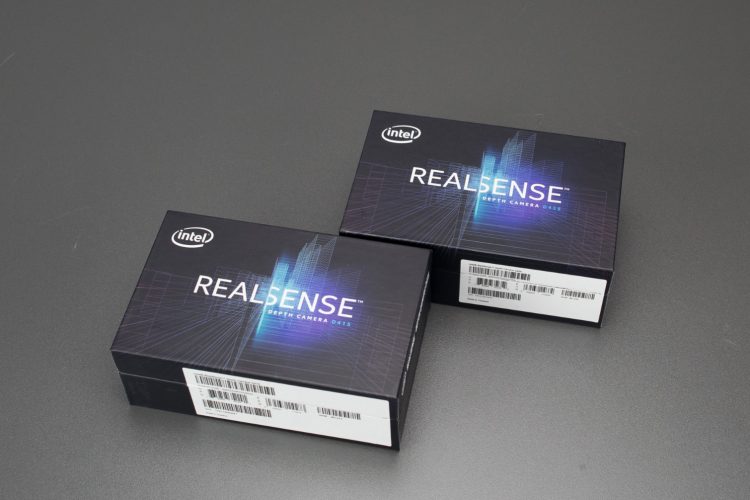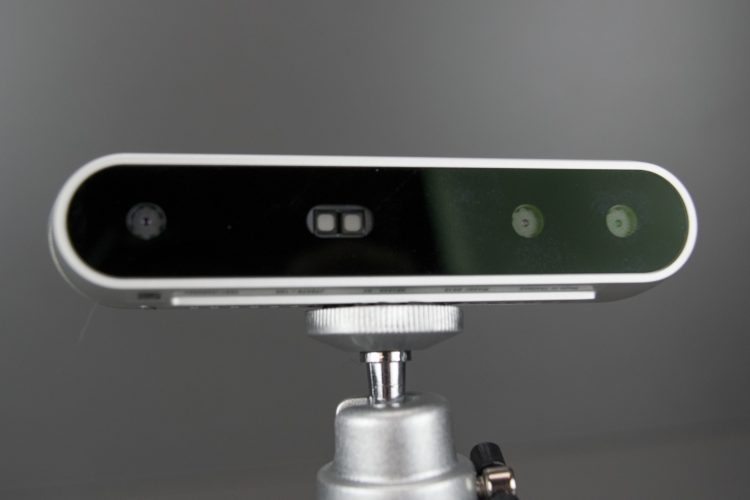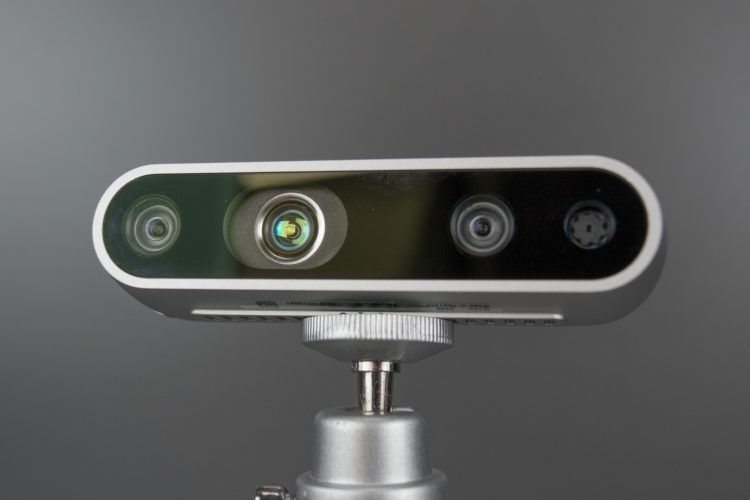RealSense D400-Series Depth Cameras Are For Devs, Not Consumers (Hands On)

Intel launched a new generation of RealSense depth cameras this week, and they feature stereo cameras, updated depth modules, and Intel RealSense D4 vision processors. Intel’s RealSense D400 Series Depth Cameras offer advanced computer vision capabilities in a convenient form factor with USB connectivity. But these cameras aren’t built for consumers; you need to be a developer to get any meaningful use out of them.
Intel said it designed the new RealSense D400-series cameras for makers, educators, and developers. The D400-series cameras come in a compact USB-powered form factor for easy deployment in hardware prototyping projects. The USB connectivity also makes the new RealSense D400 cameras convenient options for prototyping software that takes advantage of the new depth modules and the integrated vision processor.
“Many of today’s machines and devices use 2D image recognition-based computer vision, but with Intel RealSense’s best-in-class depth technology, we are redefining future technologies to ‘see’ like a human, so devices and machines can truly enrich people’s lives,” said Sagi Ben Moshe, vice president and general manager of the RealSense Group at Intel. “With its compact, ready-to-use form, the Intel RealSense D400 Depth Camera series not only makes it easy for developers to build 3D depth sensing into any design, but they are also ready to be embedded into high-volume products.”
Intel’s RealSense D400 series includes two cameras that serve somewhat different purposes. The RealSense D415 camera features rolling shutter sensors with small lenses that have a narrow field of view. It also includes an Intel RealSense module D410 depth sensor, which processes depth information from the stereo cameras in real time. Intel said the narrow field of view of the D415 provides high depth resolution, which is “ideal for precise measurement.” The combination of smaller lenses, rolling shutter sensors, and the D410 module allow Intel to keep the price of the RealSense D415 under $150.
The RealSense D400-series also includes the RealSense D435 depth camera, which offers global shutter sensors and larger lenses for better low-light performance than the cheaper D415 camera. The D435 also features a more powerful RealSense module D430. Intel said that the D435 camera is the “preferred solution for applications such as robotic navigation and object recognition.” The RealSense D435 with its larger lenses and global shutter sensor is somewhat more expensive than the RealSense D415, but it’s still under $200.
Both RealSense D400-series cameras support depth output 1280 x 720 active stereo depth resolution at up to 90 fps. The D400-series cameras can also capture RGB video at up to 1080p, but we experienced significant frame drops at that resolution. They can capture 720p video at a smooth 30 fps.
The Intel RealSense D400-series cameras feature a strong aluminum outer shell, which should protect the components from the elements and from abuse. The aluminum body of both cameras include slots on the top and bottom to allow air to pass through and keep the components cool. The bottom of each camera includes a standard ¼” thread for a tripod mount. Intel includes a miniature tripod in the box, but we’d suggest getting something a little sturdier for long-term use. The back of both cameras also includes two smaller thread points that you can use to mount the camera to the device you’re building.













